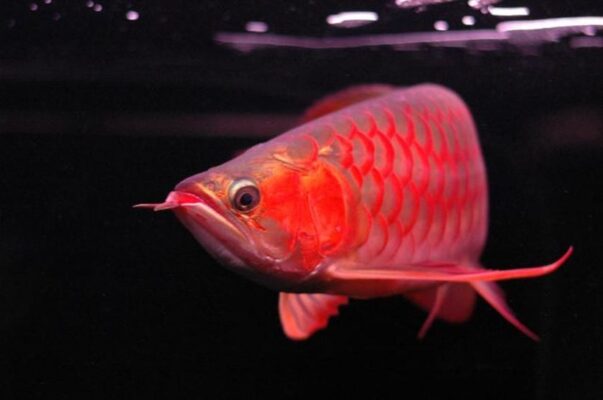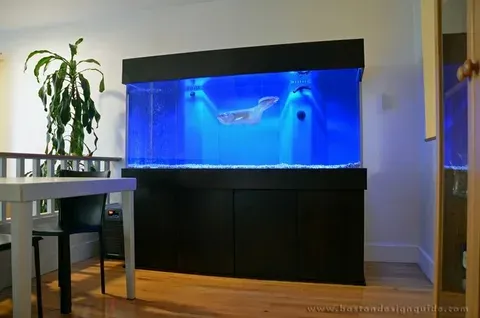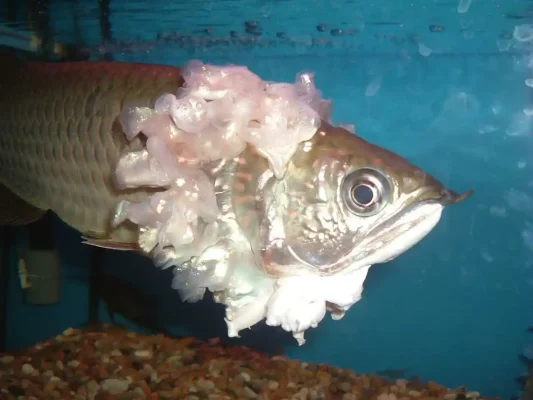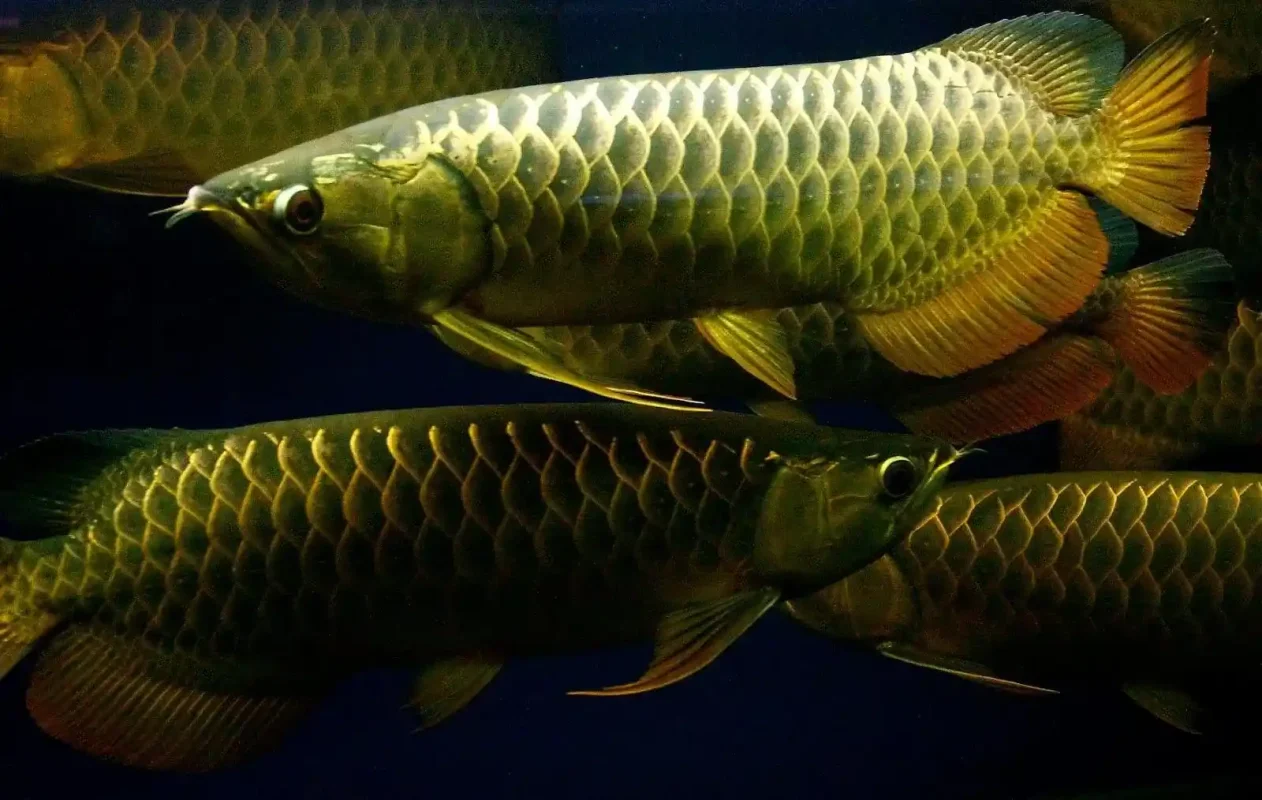Discover Rare Arowana Species: Exotic Aquatic Marvels
Discover Rare Arowana Species: A Guide to Exotic Fish
Arowanas are some of the most sought-after aquarium fish, known for their majestic appearance and unique characteristics. This guide will introduce you to the rarest and most expensive Arowana species, their care requirements, and other interesting facts.Origin of Arowana Fish
Asian Green Arowana
Common Name: Asian Green Arowana
Scientific Name: Scleropages formosus
Origin: Southeast Asia
Coloration: Greenish hue with metallic scales
Size: Up to 3 feet
Diet: Carnivorous, prefers insects and small fish
Behavior: Territorial, best kept alone or with larger fish
Minimum Tank Size: 250 gallons
Water Temperature: 75-82°F
pH: 6.0-7.0
Lifespan: Up to 20 years
Price: $300+
Description: The Asian Green Arowana is a stunning fish known for its vibrant green scales. It requires a large tank and a well-maintained environment to thrive. It’s a great choice for experienced aquarists due to its specific care needs.
Asian Red Arowana

Common Name: Asian Red Arowana
Scientific Name: Scleropages formosus
Origin: Southeast Asia
Coloration: Bright red
Size: Up to 3 feet
Diet: Carnivorous, needs a varied diet including pellets and live food
Behavior: Aggressive, best kept in a species-only tank
Minimum Tank Size: 250 gallons
Water Temperature: 75-82°F
pH: 6.0-7.0
Lifespan: Up to 20 years
Price: $1,000+
Description: The Asian Rare Arowana Species is considered the most beautiful and expensive of the Arowana species. Its vibrant red color and large size make it a prized possession among fish enthusiasts.
Golden Arowana

Common Name: Golden Arowana
Scientific Name: Scleropages formosus
Origin: Indonesia
Coloration: Lustrous gold
Size: Up to 3 feet
Diet: Carnivorous, prefers a mix of live and prepared foods
Behavior: Territorial, should be kept in a large, well-decorated tank
Minimum Tank Size: 250 gallons
Water Temperature: 75-86°F
pH: 6.0-7.5
Lifespan: Up to 20 years
Price: $400+
Variants:
- Golden Crossback Arowana: Gold color crosses the back.
- Golden Head Full Helmet Crossback Arowana: Entire body is vivid gold.
Description: Golden Arowanas are coveted for their stunning appearance and cultural significance. They are seen as symbols of wealth and prosperity in many Asian cultures.
Silver Rare Arowana Species

Common Name: Silver Arowana
Scientific Name: Osteoglossum bicirrhosum
Origin: South America
Coloration: Silvery body
Size: Up to 4 feet in the wild, 3 feet in captivity
Diet: Carnivorous, eats fish, insects, and crustaceans
Behavior: Generally peaceful, can be kept with other large fish
Minimum Tank Size: 250 gallons
Water Temperature: 75-82°F
pH: 6.0-7.5
Lifespan: Up to 20 years
Price: $200+
Description: Silver Arowanas are the largest of the Arowana species and are known for their sleek, silvery appearance. They require a spacious tank and a diet rich in protein.
Black Rare Arowana Species
Common Name: Black Arowana
Scientific Name: Osteoglossum ferreirai
Origin: South America, Negro River
Coloration: Black in juveniles, turns silver with age
Size: Up to 3.5 feet
Diet: Carnivorous, prefers live food
Behavior: More aggressive than Silver Arowana
Minimum Tank Size: 250 gallons
Water Temperature: 75-82°F
pH: 6.0-7.5
Lifespan: Up to 20 years
Price: $250+
Description: Black Arowanas start with a striking black coloration that fades as they mature. They are less common and more aggressive, making them a challenge for novice keepers.
African Rare Arowana Species

Common Name: African Arowana
Scientific Name: Heterotis niloticus
Origin: Africa
Coloration: Olive-green
Size: Up to 3.3 feet
Diet: Omnivorous, enjoys meaty foods
Behavior: Can be aggressive, requires careful tankmate selection
Minimum Tank Size: 250 gallons
Water Temperature: 75-82°F
pH: 6.0-7.5
Lifespan: Up to 20 years
Price: $70-$2,000
Description: The African Arowana is unique in appearance with its round body and distinct head shape. It requires a large tank and a varied diet to maintain its health.
Australian Rare Arowana Species

Common Name: Australian Arowana (Jardinii, Spotted Arowana)
Scientific Name: Scleropages jardinii, Scleropages leichardti
Origin: Australia, New Guinea
Coloration: Dark with reddish or pinkish spots
Size: Up to 35 inches
Diet: Carnivorous, prefers live food
Behavior: Very aggressive, best kept alone
Minimum Tank Size: 180 gallons
Water Temperature: 75-82°F
pH: 6.0-7.5
Lifespan: Up to 20 years
Price: $250-$3,000
Description: Australian Rare Arowana Species are known for their aggressive nature and distinctive spotted appearance. They are best suited for experienced aquarists with large tanks.
Summary Table
| Species | Origin | Coloration | Size (ft) | Diet | Tank Size (gal) | Temp (°F) | pH | Lifespan (years) | Price ($) |
|---|---|---|---|---|---|---|---|---|---|
| Asian Green Arowana | SE Asia | Greenish | Up to 3 | Carnivorous | 250 | 75-82 | 6.0-7.0 | Up to 20 | 300-1,500 |
| Asian Red Arowana | SE Asia | Bright Red | Up to 3 | Carnivorous | 250 | 75-82 | 6.0-7.0 | Up to 20 | 1,000-5,000 |
| Golden Arowana | Indonesia | Gold | Up to 3 | Carnivorous | 250 | 75-86 | 6.0-7.5 | Up to 20 | 400-4,000 |
| Silver Arowana | S. America | Silvery | Up to 4 | Carnivorous | 250 | 75-82 | 6.0-7.5 | Up to 20 | 50-1,000 |
| Black Arowana | S. America | Black to Silver | Up to 3.5 | Carnivorous | 250 | 75-82 | 6.0-7.5 | Up to 20 | 250-2,000 |
| African Arowana | Africa | Olive-green | Up to 3.3 | Omnivorous | 250 | 75-82 | 6.0-7.5 | Up to 20 | 70-2,000 |
| Australian Arowana | Australia, NG | Dark with spots | Up to 3 | Carnivorous | 180 | 75-82 | 6.0-7.5 | Up to 20 | 250-3,000 |
Care Tips for Arowanas
Arowanas are unique and beautiful fish, but they require special care to thrive. Here are some essential tips for maintaining a healthy environment for your Arowanas.Mastering Arowana Care
Tank Size
Arowanas are large, active fish that need plenty of space to swim. The minimum tank size for most species is 250 gallons. Ensure your tank is long and wide to accommodate their swimming habits.
Diet
A varied diet is crucial for Arowanas. They are carnivorous and thrive on a mix of:
- Live food: insects, small fish, and crustaceans.
- Frozen food: bloodworms, shrimp, and krill.
- Pellets: high-quality Arowana pellets to ensure they get all the necessary nutrients.
Water Parameters
Maintaining the correct water parameters is vital for the health of your Arowana:
- Temperature: Keep the water between 75-82°F (some species may require slightly higher temperatures).
- pH: Maintain a pH level between 6.0-7.5, depending on the species.
- Filtration: Use a powerful filtration system to keep the water clean and oxygenated. Arowanas produce a lot of waste, so a robust filter is essential.
Tank Setup
- Decorations: Provide ample hiding spots and open swimming areas. Avoid sharp decorations that could injure your Arowana.
- Lighting: Use moderate lighting. Too much light can stress the fish, while too little can affect their coloration.
- Tank Lid: Arowanas are known to jump, so a secure tank lid is necessary to prevent accidents.

Behavior and Compatibility
Arowanas are territorial and can be aggressive, especially towards smaller fish. It’s best to keep them alone or with other large, non-aggressive fish. Monitor their behavior and be prepared to separate them if necessary.
Regular Maintenance
- Perform regular water changes (about 20-30% weekly) to keep the water quality high.
- Test the water parameters regularly to ensure they remain within the optimal range.
- Clean the tank and decorations to prevent the buildup of harmful bacteria and algae.
Health Monitoring
Keep an eye on your Arowana for signs of illness, such as changes in appetite, coloration, or behavior. Common issues include:
- Parasites: Look for visible signs like spots or worms.
- Infections: Cloudy eyes, fin rot, or unusual swimming patterns can indicate bacterial or fungal infections.
- Nutritional Deficiencies: Ensure a balanced diet to prevent issues like deformities or weakened immune systems.
By following these care tips, you can create a thriving environment for your Arowana, ensuring they live a long and healthy life.

Cultural Significance of Arowanas
Arowanas hold a special place in many cultures, especially in Asia. They are often seen as symbols of luck, prosperity, and power due to their dragon-like appearance. In Feng Shui, keeping an Arowana is believed to bring good fortune and ward off negative energy. How Much Are Arowana Fish
Conservation Status
Many Arowana species are endangered due to overfishing and habitat destruction. Conservation efforts are in place to protect these magnificent fish and their natural habitats. When purchasing an Arowana, ensure it comes from a reputable breeder who follows ethical practices.
FAQ
Q: Can I keep more than one Arowana in the same tank? A: It is generally not recommended to keep multiple Arowanas together due to their territorial and aggressive nature. If you do, ensure the tank is very large and has plenty of hiding spaces.
Q: How often should I feed my Arowana? A: Feed your Arowana 1-2 times a day with a varied diet to ensure they get all necessary nutrients.
Q: What should I do if my Arowana stops eating? A: Check water parameters and ensure they are within the optimal range. Stress or illness can also cause appetite loss, so monitor for any signs of disease and consult a vet if necessary.


 Deutsch
Deutsch